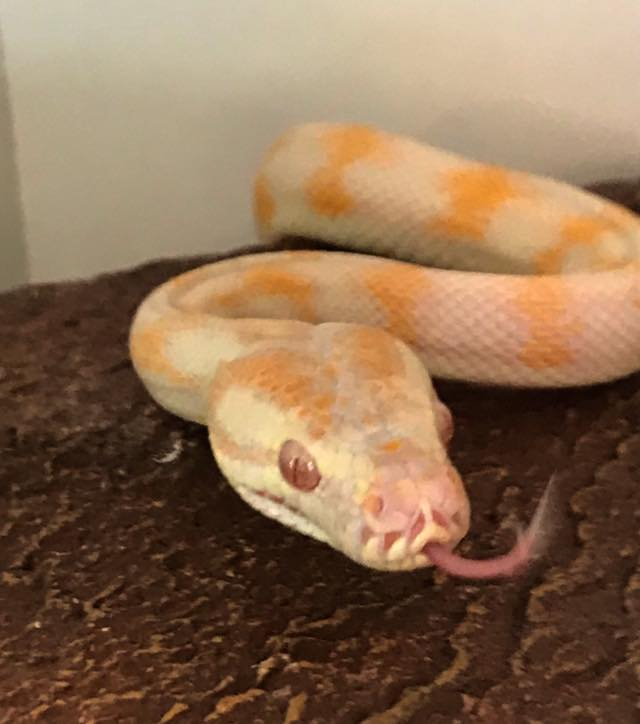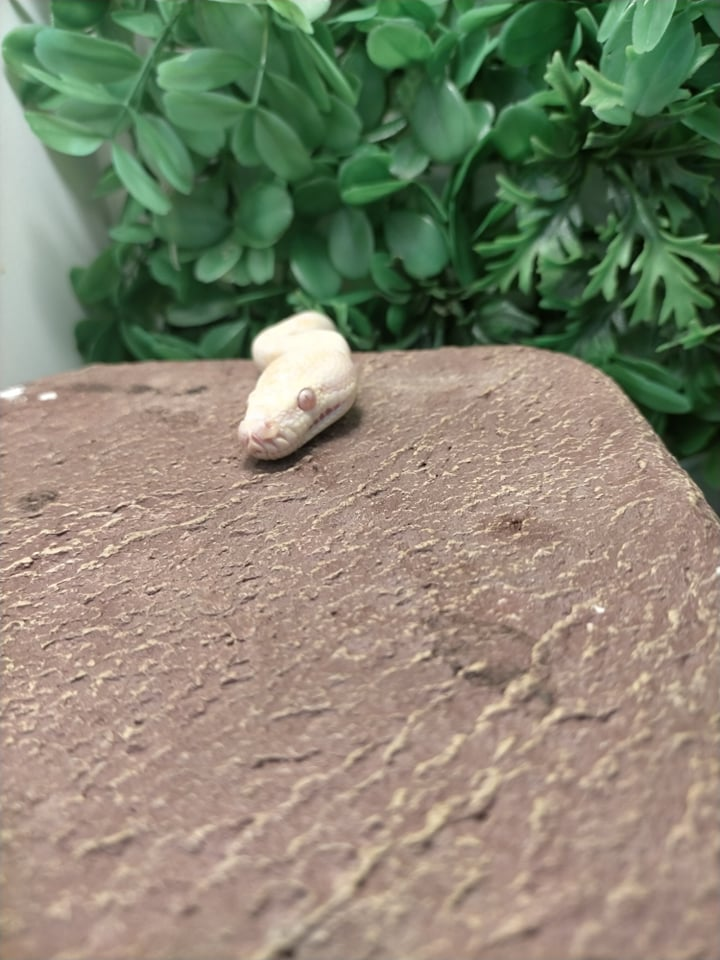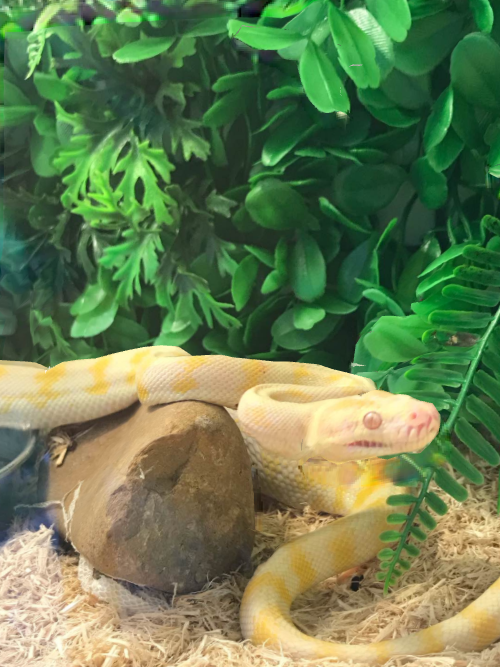I did a post a week or so ago about the albino wallabies that we have so I thought it only fitting to do one featuring our resident albino snake as well!
Allow me to introduce, Sunny!

About Sunny.
Sunny is an albino Darwin carpet python and came to us from a reptile rescue organisation based in Melbourne called Homeless Herps. They do fabulous work rehoming abandoned and confiscated animals specialising in reptiles.
Sunny is only young at around 18 months and still has a lot of growing to do, he's incredibly calm for a young snake. Most young snakes are much more bitey and defensive but Sunny obviously had a good bit of handling and is more than happy to come for a slither on your hand.

Look at that cute little face
Sunny is also the only reptile at the wildlife park to have a microchip, which you can actually see under his skin at times because of his albinism. This was installed before he came to us and is fairly uncommon in the reptile trade. Most snakes that escape are either found very close by or never found at all.
Being an albino his colours are simply gorgeous and he will grow to be a very good looking snake. Albino snakes are highly sought after and an adult albino Darwin can fetch as much as $2000 AUD.
He is incredibly popular with guests both because of his colour and his personality.
Basic info
The Darwin carpet python is just one of the many different carpet pythons and can be found at the very top of Australia, generally in the...you guessed it Darwin area.
They are a fairly large snake when full-grown reaching up to 2m+ or 6-7 feet. Their diet consists of small mammals, other reptiles and birds, in captivity they eat mostly a diet of fresh-thawed rats and rabbits. In Australia it is illegal to feed live prey.

Cuddles our non-albino Darwin carpet python hanging out in the drier
Carpet pythons are active during both day and night, they will often bask in the mid morning sun and hide from the extreme temperatures of the middle of the day before basking again in the later afternoon. Many of these pythons are arboreal meaning they climb and live in trees. They are fantastic climbers but are also more than happy to curl up and hide under a rock or tree.
Pythons possess what are called heat pits. The heat pits sit on both sides of the lower face and allow the snake to see heat. Along with their keen sense of taste and their ability to sense vibrations in the ground this makes them a fairly effective hunter.
Feeding and keeping
Sunny is easy to handle, he's small and docile and a generally very friendly snake. He does have a very strong feeding response which can be intimidating. Most reptile keepers avoid handling their snakes just after they've eaten and just before they shed. After feeding snakes are generally fat and slow, as such they are also more vulnerable and will take on a more aggressive disposition until they have managed to digest their meal.
Sunny once escaped from his enclosure during the night and was found behind a cupboard. During the night he had managed to find a wild rat that was getting into the kangaroo feed and got himself a meal. Unfortunately for Sunny the rat he killed and swallowed was about 3 times too large for him. For 3 days he sat in his tank with an enormous lump in his middle and we genuinely thought he might die, when we went to check on him that night we discovered a very disgusting, regurgitated rat body in his tank.

If you are going to keep one in captivity they require a decent sized enclosure with both access to branches and sticks for climbing as well as enough area to stretch out on the ground. They generally enjoy high temperatures but as with all reptiles, require a heat gradient in their tank to allow them to self regulate their temperature. A well cared for carpet python can reach up to 30 years of age with some of ours being almost 25 now.
Blondie, the first albino Darwin carpet python in Australia.
The first Albino carpet python discovered in Australia was nick-named Blondie. Blondie was found hanging on a shower rail in someones bathroom in the Northern Territory. She was taken by the government and transferred to a breeding facility in South Australia where she has since had many offspring, who in turn, have had many of their own offspring.
Most of the albino carpet pythons in Australia are Darwin carpet pythons and almost everyone of them came from Blondie in some way.
I don't particularly understand all the genetics around it but ever since blondies first few clutches they have been crossbred with many different species and are now a fairly common, though still expensive, snake.
I don't particularly like Blondies story, I have never been a fan of people who take animals from the wild, especially not to breed for a profit. I do understand that in some cases breeding programs are the only way to ensure the future of the species but for most of these animals in captivity it is no more than a money grab. It is hard to find much more information on Blondie, supposedly she is one of only 2 albinos wild caught, I hope wherever she went looked after her well given the contribution she has now made to the hobby.
Hope you enjoyed and appreciate any feedback!